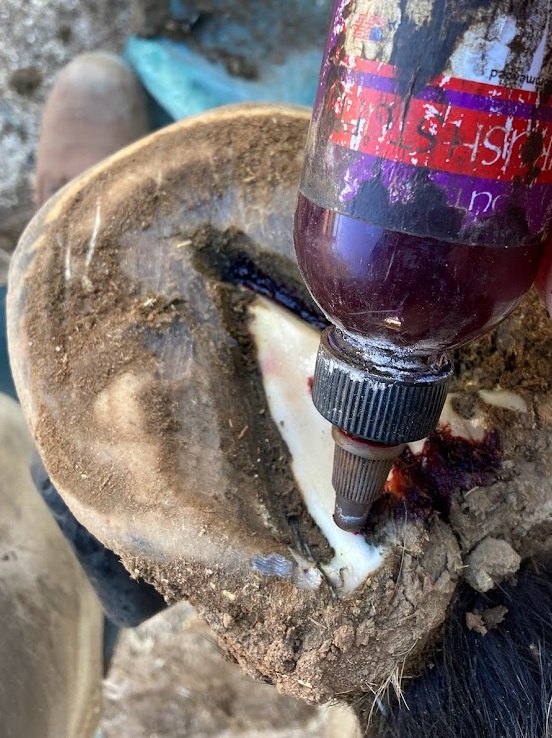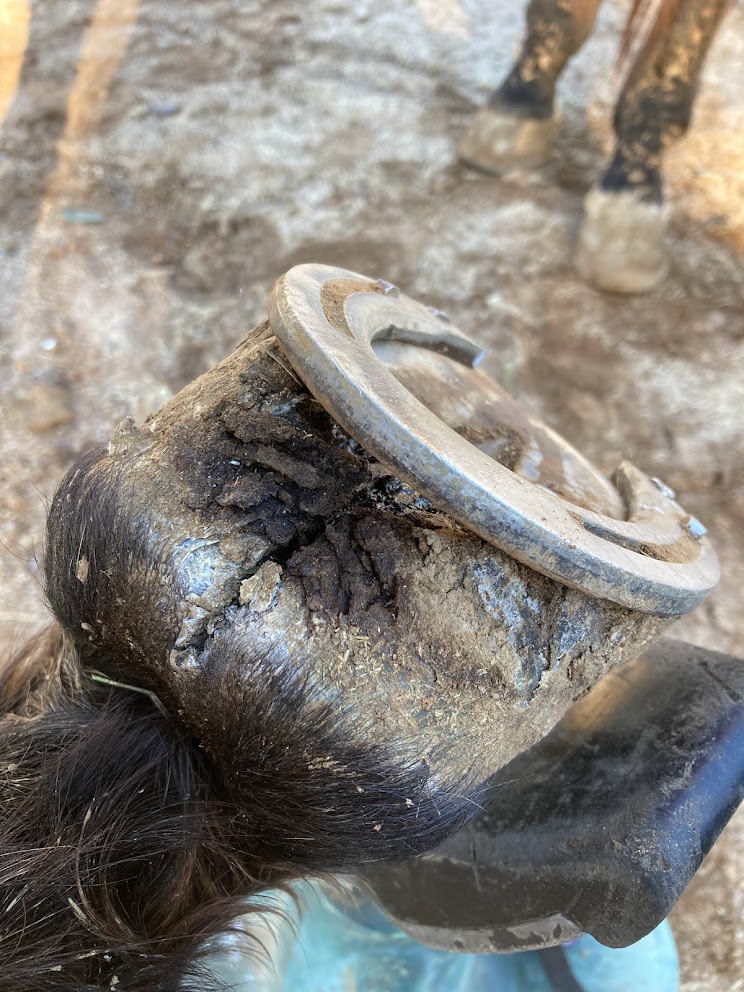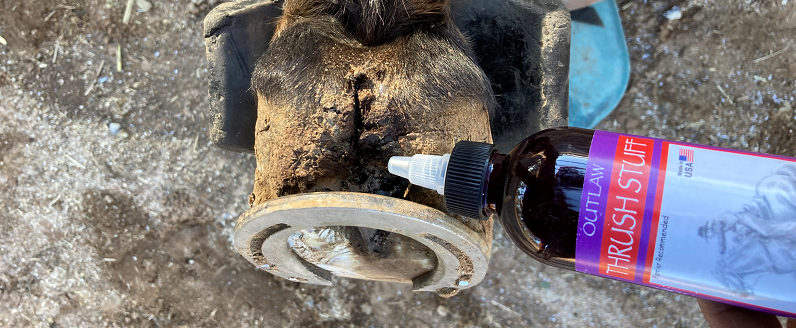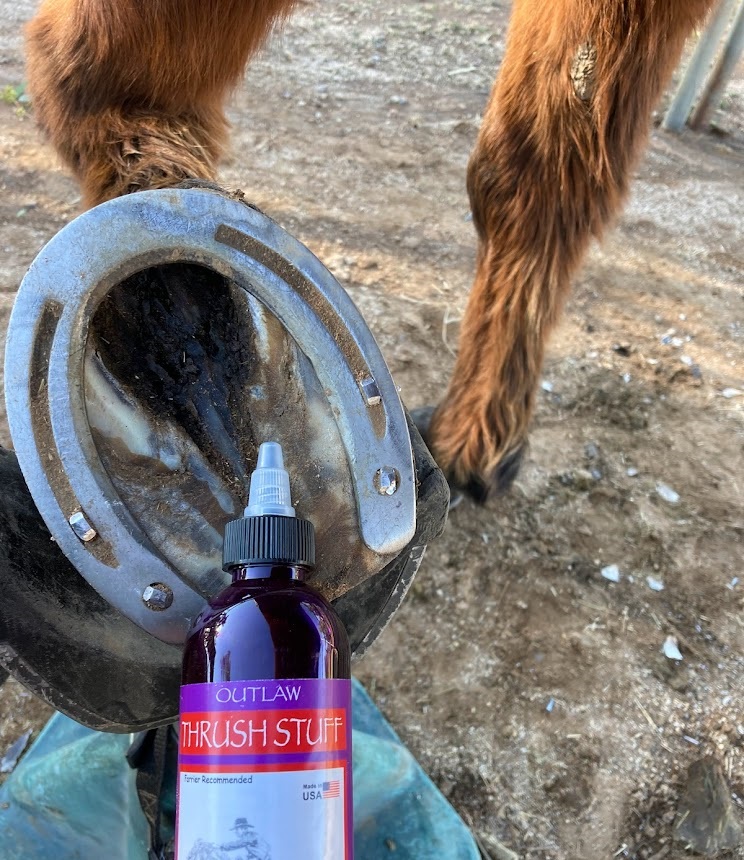Thrush in Horses Effects and Treatment
A nasty, rotten odor found when picking a horse’s hoof is a good sign of a thrush bacterial infection. Thrush in horses’ hooves erodes or eats the frog’s tissues, leaving a blackish cream on the surface where the frog was. Although the smell is quite foul, thrush usually does not cause lameness.
However, in more severe thrush cases, a horse may be a little “off” or lame. When horses live in an unclean, confined area, such as a stall or small paddock, thrush in horses is more apt to thrive because of the accumulation and packing of warm and moist manure – a breeding ground for infection.
A horse exposed to “clean” mud or dirt free of manure and urine isn’t as likely to develop thrush as one who stands in urine-soaked bedding for most of the day. As a variety of bacteria, the epidermis, or outer horn of the frog, the tissues deteriorate. And because this is dead tissue, there is no blood supply or oxygen to help fight off the infection. The whole area becomes an incubator for the overgrowth of bacteria. Horses whose feet are not well maintained or who wear hoof pads are also more susceptible to thrush.

The Outlaw Thrush Stuff is applied to the hoof.

Outlaw Thrush Stuff
The owner had tried to clear this up using several different products. Some products had a terrible clinical odor, some were risky (carcinogens), some were complicated, and some stained her hands, horse & barn aisle. Some damaged healthy tissue even if they appeared to work because they contained products such as iodine and Gentian Violet (Carcinogenic).
She then started using Outlaw Thrush diligently daily. No more mess, smell, or risky liquids! The thrush cleared up! It should be noted, in cases of a long-standing thrush infection, such as this, continued use of Outlaw Thrush treatment to prevent future thrush is a good idea. Outlaw Thrush will penetrate the crevices and not just dust the surface of the hoof.
Dry hoof preparations will not penetrate the source but merely cauterize the surface, trapping infection and creating more severe conditions in the hoof. Using Outlaw Thrush treatment for horses is the best comprehensive treatment you can buy.
Aftercare is just as important. Follow these instructions:
Daily attention to hoof cleanliness and health is essential. If you can’t do this, make a backup plan with a friend who can assist you. Early recognition will go a long way in preventing or containing a festering infection.
Your horse NEEDS regular motion to properly circulate blood to keep healthy, which includes the hooves. Regular exercise and turnout are essential – so get your horse outside and moving.
The frogs should be trimmed so that while the V of the frog may remain somewhat deep, the frog isn’t allowed to grow to a point where it is overlapping, trapping organisms that can grow. This promotes self-cleaning of the clefts during a horse’s outside activities, including walking, exercising, playing, working, etc.
Keep your horse’s environment clean, the object being to limit your horse’s access to areas of potential contamination. This includes providing good drainage for all living spaces, including turnout pastures and daily mucking of paddocks and stalls, and a regular preventive Outlaw Thrush treatment routine.
By following these simple steps, you can keep thrush at bay.


